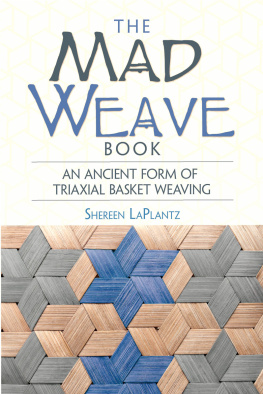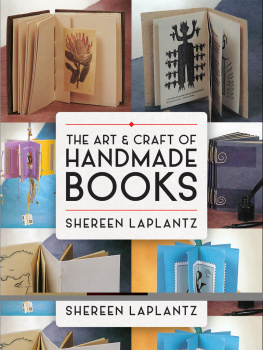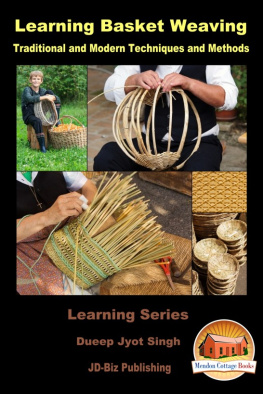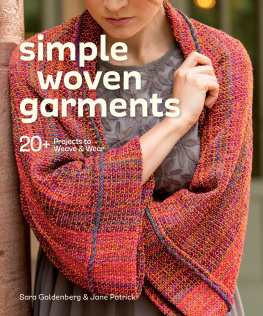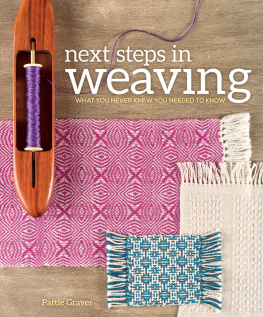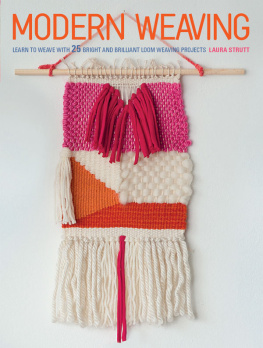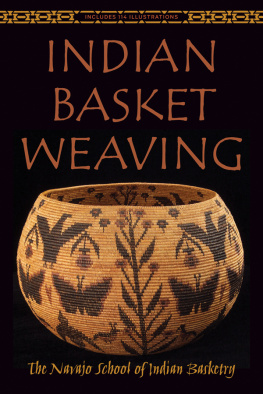
Sumba basket from Mary Lou Reichard's collection.

photo credit: David L. Chapman
THE
Mad Weave
BOOK
AN ANCIENT FORM OF TRIAXIAL BASKET WEAVING
SHEREEN LAPLANTZ
DOVER PUBLICATIONS, INC
MINEOLA, NEW YORK
ACKNOWLEDGEMENTS
Crystal Dobbs, my assistant, deserves many thanks. She had the guts to jump into the dark room, without real training, and try printing the photos. Most of this book has been put together in pieces between trips. Crystal has held everything together, pasted copy, answered questions and pushed me back to thinking about the book. Her efforts have been primary to this book's completion.
My husband, David, has again helped. He not only is generous about timemy being frazzled and the bed being covered with book pages being pasted. But he believes in me. When I fall apart, knowing I've bitten off too much this time, he puts me back together, telling me I can do it. Then he starts fixing the meals and cleaning the house, so I can concentrate completely. When the printing job is terrible and has to be refused, David's the one who points out my options and keeps me from falling apart.
Finally I must thank my parents, Charles and Grace Buckland, again. This time Mom didn't come here to paste the book together. Instead, when I realized I didn't have enough basket examples to illustrate this book, Mom and Dad went shopping for me. They could only find mad weave baskets at a wholesale house. They convinced the owners their daughter was desperate, and bought basketsat wholesale quantities! Next they borrowed my brother's camper so they could drive the baskets up here, there were too many to ship.
I'm a person who likes to rely on myself. A book is too large and too complex a project for that attitude. Thank you, all of you. I couldn't do this without you.
Copyright
Copyright 1984 by Shereen LaPlantz
All rights reserved.
Bibliographical Note
This Dover edition, first published in 2016, is an unabridged republication of the work originally published by Press de LaPlantz, Bayside, California, in 1984.
Library of Congress Cataloging-in-Publication Data
Names: LaPlantz, Shereen, 19472003.
Title: The mad weave book : an ancient form of triaxial basket weaving / Shereen LaPlantz.
Description: Mineola, New York : Dover Publications, Inc., 2016. | Reprint: Originally published: Bayside, California : Press de LaPlantz, 1984.
Identifiers: LCCN 2015039661| ISBN 9780486806037 | ISBN 0486806030
Subjects: LCSH: Basket making.
Classification: LCC TT879.B3 L35 2016 | DDC 746.41dc23 LC record available at http://lccn.loc.gov/2015039661
Manufactured in the United States by RR Donnelley
80603001 2016
www.doverpublications.com
Photo credit: Shereen Laplantz, unless otherwise stated
Illustration credit: Shereen LaPlantz
Lay out credit: Crystal Dobbs
TABLE of CONTENTS

Chinese Wedding basket - Bamboo. The base of this basket and for each tier, is a twill weave, not mad weave. Here the mad weave is a collar, making up the sides of the basket and the lid. Normally when mad weave is combined with another weave, it is used as the base. It is easier to make mad weave as a flat fabric.
INTRODUCTION
Mad weave was a fight for me. The very name sounds discouraging. The concept of weaving in 3 directions at once is mind boggling. For years I only found difficult ways to make it. But I knew it couldn't be difficult. All the mad weave baskets I bought were under $1.00 (a few years ago). Thinking back over the financial route of the basket, through mark-ups from the retailer, wholesaler, importer, customs broker, exporter and buyer, then adding on freight, I knew the artist was receiving 2 or 3 cents per basket. I also knew the standard of living in the Philippines and China is different from ours. Taking all that into consideration - the baskets still had to be whip outs. They had figured an easy way to make the baskets.
I have finally figured out an easy way to make mad weave. I don't know that its a traditional method, but I can whip out a mad weave basket in under one hour. Since its a slightly confusing weave, I recommend you make several bases before you attempt going up the sides. The mind needs time to reorient itself to thinking in 3 directional terms. If you allow yourself this time, the weave will be gentle to learn.
Normally when I write, the subject is something I've taught for years. I already know all of your questions and where you'll hit problems. This book has been requested before I've had a chance to experiment on many classes. Have no concern, I make mad weave, as individual baskets and combined with other techniques. Also I have had all the instructions tested by non basketweavers. Since this isn't an old technique for me, I thought it would be more interesting if I shared my approach with you. I'm sharing how I get new ideas and how I find out if they work, e.g. horizontal mad weave. In one case, A THOUGHT, I'm giving you my response to a photograph. I'm hoping you'll see mad weave as a concept, see the opportunities it presents and take it past any boundaries you've imagined. Its by pushing boundaries that you put your mark on a basket and become a creative person. Its also by pushing boundaries that you enrich the basketry field for all of us.
Philippine basket Lauhala - double weave. This is from the collection of Sue M. Smith in Texas. Notice, it has 24 elements going in each direction.


BASIC MAD WEAVE
Mad weave is a 3 directional weave or plait. The easiest construction method I've found is: make a twill fabric, then lace through the fabric in 1 more direction. This method allows you to create a basket in whatever size you choose. It also is logical and obvious enough to allow you to feel like experimenting relatively soon.
The problem with this weave is there are several rules you must follow. I've tried making mad weave without the rules. It doesn't work. The first rule governs the number of elements you use. Since it's a 3 directional weave, the number MUST be divisible by 3. If you want to weave up the sides, the number MUST ALSO be divisible by 4. That means everything needs to be divisible by a total of 12. Let's make this easy; I think of working in 4, 8, 12 or 16 - each times the 3 different directions. I recommend 8 (24) or 12 (36) for your first attempt.
I highly recommend working in 3 different colors for your first attempt at mad weave. I also recommend working with a flexible material. Consider gift wrapping ribbon or colored paper. My sample for this chapter is made from 24 - 1/2" strips of paper, cut 14" long. The finished basket is 2 3/4"H x 4 1/2"W x 4"D. This information is included to give you an idea of element length vs basket size.

Next page
